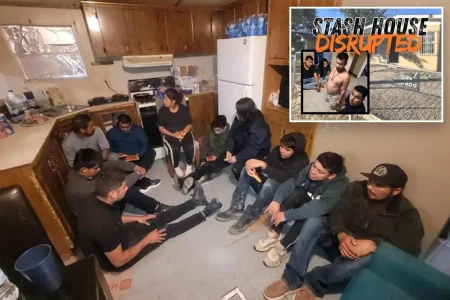Indigenous Voices Take Center Stage at Climate Summit: A Historic Shift in Global Environmental Diplomacy
A New Era of Inclusion: Indigenous Leaders Emerge as Key Players in Climate Negotiations
In the grand marble halls where global climate diplomacy traditionally unfolds, a profound transformation is taking place. The current international climate summit has distinguished itself from decades of previous gatherings through one remarkable development: the unprecedented and powerful presence of Indigenous voices. No longer relegated to the sidelines of environmental decision-making, Indigenous leaders, knowledge keepers, and advocates have arrived with unmistakable influence, bringing centuries of ecological wisdom to bear on humanity’s most pressing crisis.
“We’ve attended these summits for years, often speaking to empty rooms or being treated as symbolic participants,” explains Maria Gonzalez, a representative from an Amazonian Indigenous coalition. “This time, there’s a tangible difference. World leaders are actively seeking our input, recognizing that our communities have safeguarded biodiversity for generations while living in harmony with natural systems.” This shift reflects growing scientific acknowledgment that Indigenous territories, while covering just 22% of the world’s land surface, harbor 80% of global biodiversity—a testament to traditional stewardship practices developed over millennia. The summit’s organizers have created dedicated forums for Indigenous knowledge exchange, with traditional ceremonies opening key sessions and Indigenous representatives holding positions on critical negotiating committees—structural changes that signal more than mere tokenism.
Traditional Ecological Knowledge Meets Climate Science: Bridging Ancient Wisdom and Modern Research
The integration of Indigenous ecological knowledge with contemporary climate science represents one of the summit’s most promising developments. Dr. James Wilson, a climate scientist from Oxford University, notes: “We’re witnessing a long-overdue epistemological shift. The empirical observations accumulated by Indigenous communities through generations of intimate connection with specific ecosystems provide valuable baseline data and adaptation strategies that complement our satellite monitoring and computer modeling.” This collaborative approach was evident during a breakthrough session where Sámi reindeer herders from northern Scandinavia presented alongside glaciologists, combining their multi-generational observations of changing snow patterns with technical data on Arctic ice loss.
These knowledge partnerships are yielding practical solutions. A pioneering forest management protocol introduced during the summit combines Indigenous fire management techniques from Australia and North America with advanced carbon sequestration technologies. Similarly, coastal protection initiatives are incorporating traditional Polynesian understanding of wave patterns and marine ecosystems alongside conventional engineering approaches. “Our ancestors developed sophisticated systems for sustainable resource management through careful observation and adapted practices,” explains Tui Shortland, a Māori environmental advocate. “These aren’t historical curiosities but living knowledge systems that offer proven strategies for resilience in the face of climate instability.” The summit has established a permanent working group to ensure Indigenous knowledge is ethically incorporated into the IPCC assessment process and other international climate frameworks, representing a significant institutional advancement.
Beyond Representation: Indigenous Rights as a Climate Solution
The summit has notably shifted from viewing Indigenous communities merely as vulnerable populations toward recognizing Indigenous rights as fundamental to effective climate action. Research presented by the World Resources Institute demonstrates that forests and territories with secure Indigenous land rights show significantly lower deforestation rates and higher carbon storage than comparable government-protected areas. “Recognizing our territorial rights isn’t just a matter of justice—it’s among the most cost-effective climate interventions available,” states Raoni Metuktire, a prominent Indigenous leader from Brazil’s Kayapó people. This perspective has gained traction among policy experts and economists seeking efficient approaches to emissions reduction.
Several national delegations, including those from Canada, New Zealand, and Mexico, have included Indigenous representatives with decision-making authority—not merely as consultants but as full members with negotiating power. This reflects growing recognition of the “free, prior, and informed consent” principle established in the UN Declaration on the Rights of Indigenous Peoples. Corporate representatives attending the summit have also faced unprecedented accountability, with Indigenous delegates challenging extractive industry projects in their territories and presenting evidence of human rights violations connected to renewable energy developments. “The energy transition must not replicate colonial patterns,” emphasized Nina Wilson, a Dakota activist who helped organize a major demonstration outside the summit venue. “We’re pushing for climate solutions that respect Indigenous sovereignty while addressing historical injustices that created climate vulnerability in the first place.”
Digital Diplomacy and Global Solidarity: Indigenous Networks Transcend Borders
The technological aspects of Indigenous participation have proven equally revolutionary. Indigenous communities from remote regions are leveraging digital platforms to participate meaningfully despite geographical constraints and limited resources. Real-time translation services in Indigenous languages have enabled delegates from disparate regions to discover common challenges and coordinate their advocacy efforts. “Through digital networks, we’ve built solidarity that transcends our specific contexts,” explains Juan Carlos Jintiach, a Shuar leader who coordinates an international Indigenous climate alliance. “When mining threatens sacred waters in the Philippines, Indigenous communities in Ecuador can instantly mobilize support and share successful resistance strategies.”
This digital connectivity has amplified Indigenous influence beyond the formal negotiation spaces. Throughout the summit, Indigenous communicators have utilized social media to broadcast alternative perspectives and challenge misleading official narratives, often gaining millions of views. A particularly powerful moment came when youth delegates from Pacific Island nations and Arctic Indigenous communities held a virtual dialogue, sharing their frontline experiences of climate impacts with a global audience. The resulting hashtag campaign generated unprecedented public pressure on reluctant governments. Meanwhile, Indigenous-led initiatives to document environmental violations using drone footage and satellite imagery have provided crucial evidence for climate litigation efforts. “We’re combining traditional knowledge with strategic use of technology,” notes Hindou Oumarou Ibrahim, a Chadian Indigenous advocate. “This creates accountability mechanisms that weren’t possible in previous summits.”
From Margins to Mainstream: The Long Path Toward True Climate Justice
Despite these promising developments, Indigenous participants emphasize that significant barriers to full inclusion remain. Many delegates arrived at the summit having overcome substantial obstacles, including visa difficulties, funding constraints, and in some cases, direct opposition from their national governments. “We’ve gained a seat at the table, but that’s just the beginning,” reflects Tashka Yawanawa, chief of the Yawanawa people in the Brazilian Amazon. “The structures of these negotiations still reflect colonial power dynamics that systematically devalue Indigenous perspectives.” Several delegates pointed to continuing challenges, noting that Indigenous contributions remain underrepresented in the formal text of agreements and that financial mechanisms for climate adaptation rarely reach Indigenous communities directly.
Nevertheless, the unprecedented Indigenous presence at this summit represents a watershed moment in global climate governance—one that many observers believe will permanently alter how environmental diplomacy functions. “The climate crisis demands that we question fundamental assumptions about humanity’s relationship with the natural world,” concludes Victoria Tauli-Corpuz, former UN Special Rapporteur on the Rights of Indigenous Peoples. “Indigenous peoples have maintained alternative worldviews that reject the false dichotomy between human progress and ecological health. As conventional approaches fail to deliver necessary emissions reductions, these perspectives are increasingly recognized not as cultural curiosities but as essential wisdom for collective survival.” As the summit concludes, its lasting legacy may well be this paradigm shift: the recognition that Indigenous peoples are not merely stakeholders in climate solutions but leaders whose guidance has become indispensable in navigating an uncertain ecological future.










